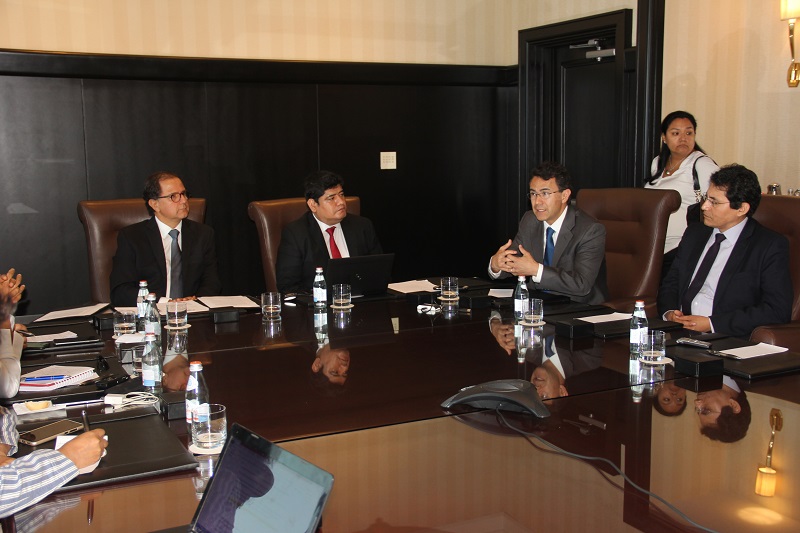New regulatory frameworks will allow the exchange of energy between Peru, Ecuador, Colombia, Chile and Bolivia to become a reality soon. The Declaration of Lima, in which the Council of Ministers of the Andean Electrical Integration System (SINEA), the Secretary General of the Andean Community (CAN), and the Chief of the Energy Division of the Inter-American Development Bank (IDB) intervened) contributed to lay the foundations to update the Roadmap that allows to cover the energy demand of these nations that is expected to increase significantly in the next 20 years.
Ariel Yépez, Head of the Energy Division of the Inter-American Development Bank (IDB), argued that when talking about regional electricity integration, what is always seen as a benefit is that “countries have greater energy security because they can exchange electricity in moments of stress “.
Yépez added that when a country has a supply problem it can rely on the existence of electrical interconnection to import electricity and supply its market, “it is a very important safety issue”.
Among the other benefits, he said, there is the capacity to buy electricity from minors and facilitate the exchange of electricity, with the respective complementarity of the water regimes of the countries.
The IDB official highlighted that this entity has already accompanied the Electric Interconnection System for Central American Countries (SIEPAC), “what we see is that countries have net benefits in reducing the costs of electric reintegration and without a doubt this is what that we believe will happen in the case of SINEA. ”
He also explained that integration opens a space for a greater participation of renewable energies and stressed that integration “has many benefits from the economic, security and climate change perspectives.”
The decisions of the CAN are mandatory
When asked by ProActivo for the social fragmentation that exists between the countries of the region, the Secretary General of the Andean Community, Jorge Hernando Pedraza, clarified that the aforementioned integration “does not cause any harm”.
“This is an exact and perfect example of interaction, because we are integrating energy systems, we are integrating infrastructure,” the official said after noting that in the present 2019, the CAN celebrates 50 years and its creation seeks to improve the standard of living for citizens Andean countries, for which it requires elements such as the integration in the electrical interconnection, of the transport of information and communication technologies.
“The CAN has also contributed to this process (Decision 816” Regulatory framework for sub-regional interconnection of electrical systems and intra-community electricity exchange “), under the auspices of the Inter-American Development Bank in the payment of consultancies,” he said.
The official said that soon will be “with the relevant regulations on the issue of the operator, within the issue that refers to commercialization and naturally in the operational aspect of the system.” It is expected that on May 26 – anniversary of the CAN – are ready documents that come from that entity, whose decisions are mandatory.
Minister Ísmodes: “The case with Chile is focused between Tacna and Arica”
The Minister of Energy and Mines of Peru, Francisco Ísmodes, said that relations with Chile, Ecuador or Bolivia are building regulatory frameworks, which will allow that exchange of energy to become a reality at the time.
“This initiative today is due to the exchange of excess energy. In the case with Chile it is focused between Tacna and Arica, in the case of Bolivia they were initially the border cities, but now it is already expanding and this year a 500 KV line is being put out to tender for a greater interconnection. This advance of integration with Ecuador is greater than the progress that has been made with Chile or with Bolivia. ”
Finally, he pointed out that the benefits that can be achieved are for everyone. “For the dwellings of regulated users or also for free users as are many of the mining companies”.
DATA:
- CAN is the 11th economy in the world, exports 120 million dollars to the planet.
- The SINEA was not only created for interconnection in CAN territory, but it went a little further. When in 1973 there were 6 countries.
- SINEA works with three of the four CAN countries, there is a country that is an observer, and there is a country additionally the main actor, which is Chile.
- The accession of Bolivia to the CAN is expected.



[…] Historical steps towards electrical integratio… […]